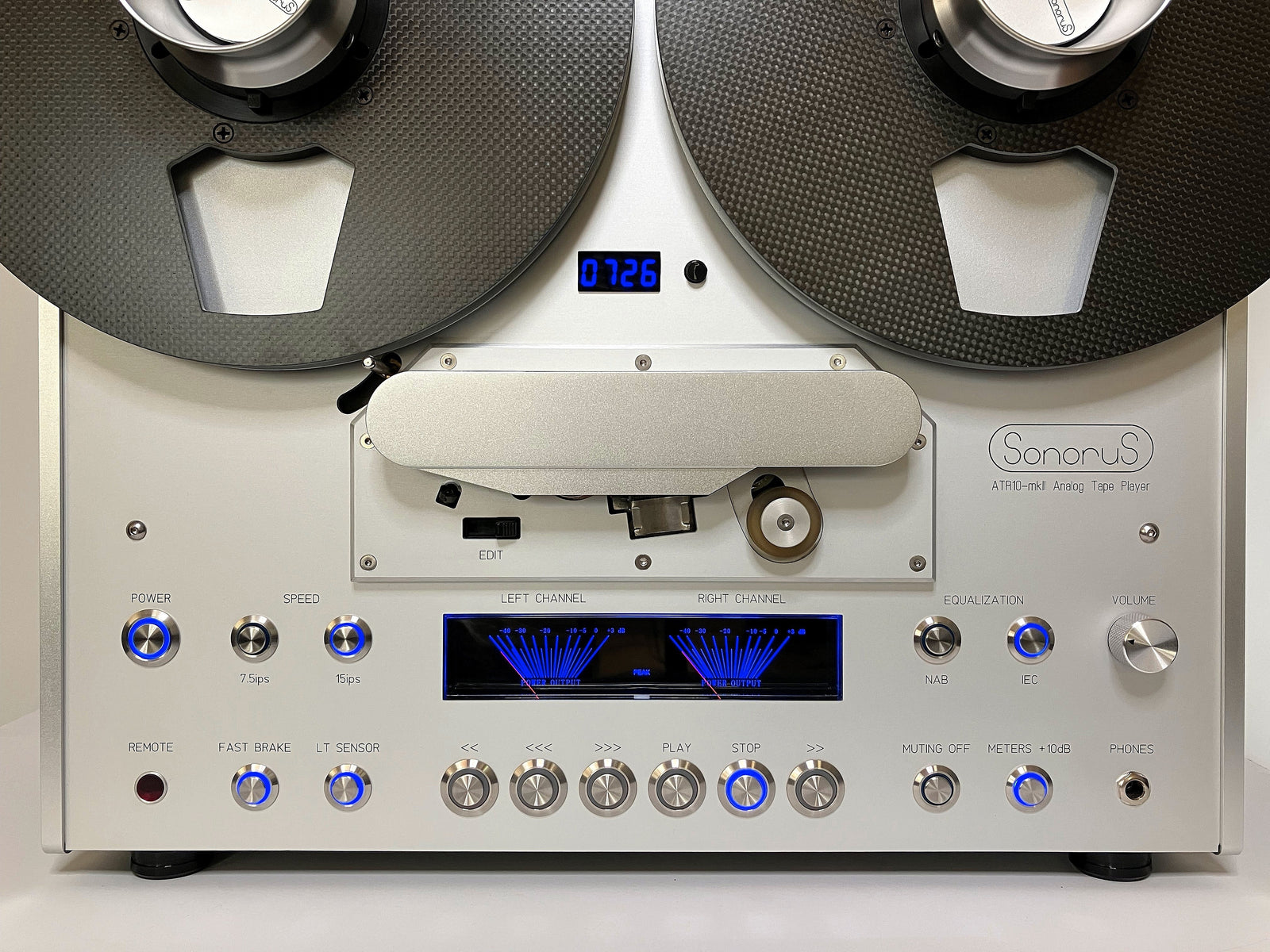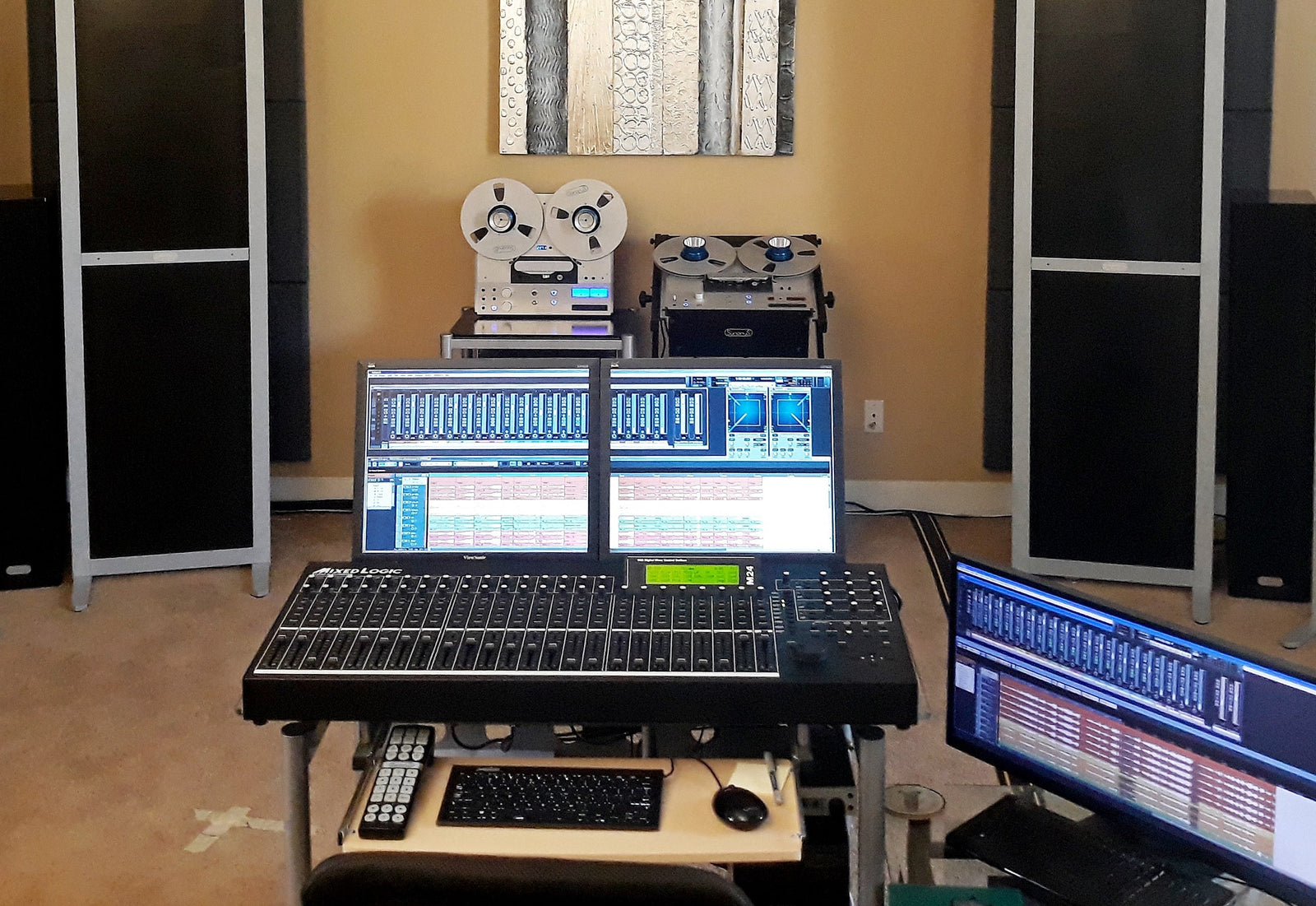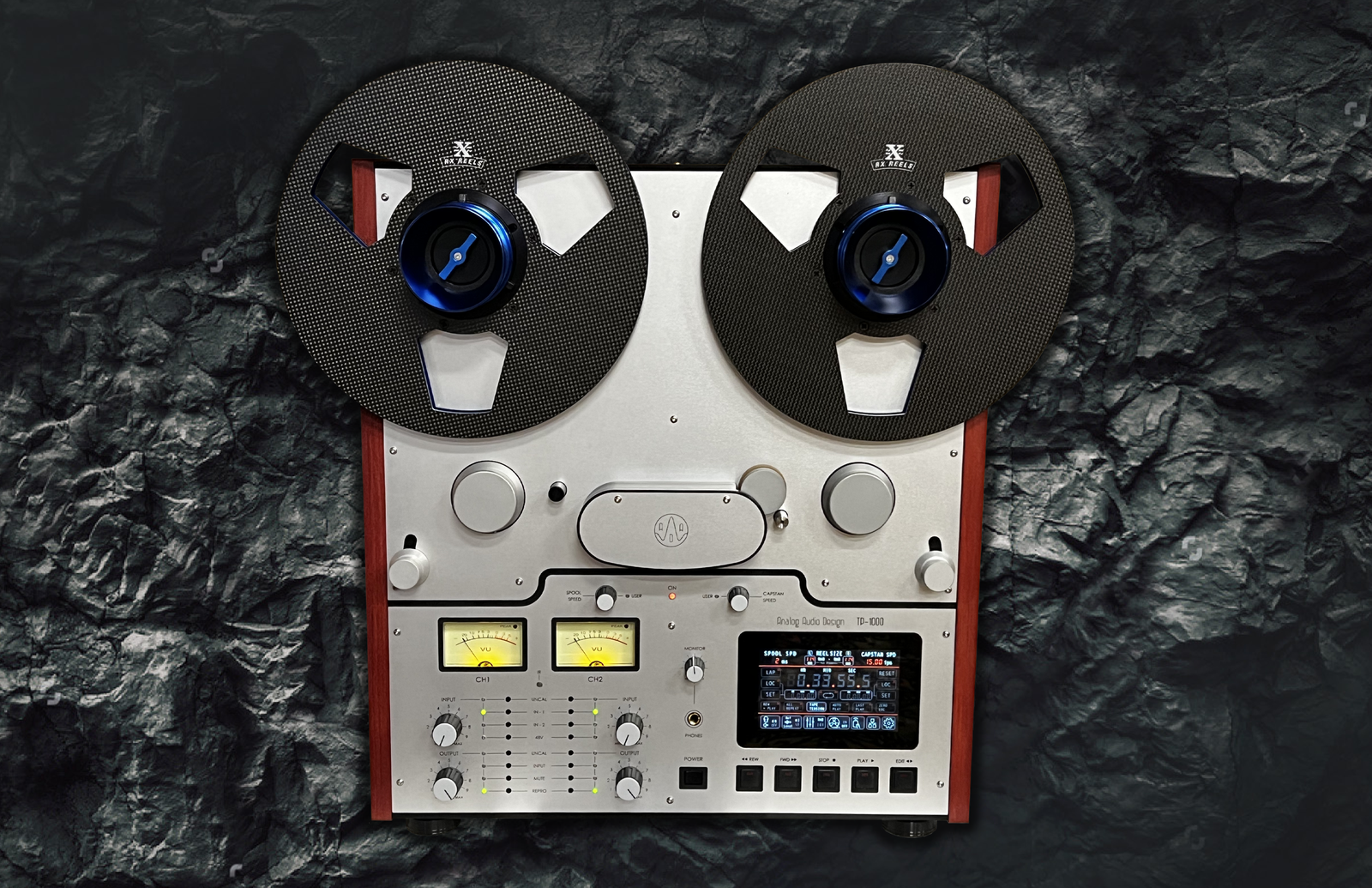Your Cart is Empty

The story of Jack Mullin & the start of commercial reel to reels.
WWII is over and Major John T. (Jack) Mullin is back home in San Francisco after he mustered out of the Army. After taking three or four months to put the machines back together, using his education and military background in electrical engineering, Mullin forms a business partnership with filmmaker and 16mm film sound pioneer W.A. (Bill) Palmer. Palmer provided the financial and mechanical engineering assistance Mullin needed.
Jack built two “record and reproduce” decks with a passive switching bridge between them much as he had seen in Bad Nauheim. The tape reels were 11/44-inch which held 22-minutes of music at 77cm/s tape speed. Jack knew that for a half-hour show he would need to be able to switch the input and output signals between the two machines.
Jack’s redesign of the Nazi Magnetophone machine was superior to anything else anyone in the States had ever heard. In May of 1946, Mullin and Palmer demo the hi-fi tape decks at the NBC studios in SF to members of the Institute of Radio Engineers. Those at the demo were stunned and could not believe it was not a live performance. In this historic audience among others were Harold Lindsay, Walter Selsted, and Frank Lennert who all worked on Ampex Model 200, the first pro audiotape deck in America, and Charlie Ginsburg who would lead the team who built the first successful commercial videotape recorder.
Meanwhile, Mullin, while working with Palmer Films designed methods of producing superior quality audio for the pre-production of 16mm films. The two Magnetophons which Mullin had brought back from Germany and modified were used to produce the first U.S. commercial entertainment disc professionally mastered on tape, which was Songs, by Merv Griffin.
Mullin and Palmer headed to Hollywood in October of 1946 where they put on a demonstration at the studios of Metro-Goldwyn-Mayer, where they debut crystal-clear recording performances by harmonica virtuoso Larry Adler and pianist Jose Iturbi accompanied by the MGM Symphony Orchestra, and this is how Bing Crosby’s tech producer found out about the recording device and set up a demo for Crosby.
At that time Crosby needed a high-quality audio recording device to produce his show for delayed broadcast. The king of crooners was known for hating live performances and preferring the more relaxed vibe of a recording studio. The star had been with NBC broadcasting his 30-minute show weekly, once for the east coast and three hours later for the west coast during the 1944-45 season, both live performances and Crosby was over it, he quite radio in the fall of 1945.
For the 1946-47 season, Crosby, now with ABC, decided to produce his Philco Radio Time using the Mullin-Palmer decks, transferring the final cut to a first-generation electrical transcription disc for on-air play as they did not have enough trust in tape to play it live.
In 1948 Ampex had built a domestic version of the Magnetophon while 3M, Audio Devices, and others began to make the blank tape.
ABC’s contract with Crosby specified they would provide him with the best available recording facilities for his time-delayed show and Crosby insisted on an agreement with Palmer Films, which would be the sales agent for the Ampex tape recorders. ABC demanded Bing Crosby Enterprises and not Palmer Films become the exclusive sales agent for the Ampex recorders. After Crosby invested $50,000 in Ampex the deal was struck. The first twelve Ampex machines went to ABC.
The founding father of the American reel-to-reel tape deck went on to work wonders in the world of sound and television. Jack continued to work with Crosby through the rest of Crosby’s career both on the radio and then on television. Mullins Crosby video prototypes became the basis for many pro and consumer audio and data recorders.
After Crosby retired, he sold his electronics lab, where Mullin had worked so diligently, creating some of the world’s most wonderous electronic breakthroughs to 3M.
Mullin went on to create a collection of historic entertainment technology, the Mullin museum is part of the Pavek Museum of Broadcasting, near 3M in Minnesota. He not only introduced high-fidelity magnetic tape recording, but he also built the first prototype videotape recorder and created many of the standards for technology used today. He passed away in 1999 from heart failure at his home in California at the age of 85.
Thinking about entering the growing world of reel to reel tape players? Read our Ultimate Guide for Reel to Reel Tape Players.


This post delves into the topic of making enhancements to the actual recorded media on reel-to-reel tape. Numerous vinyl albums have been remastered, and indeed, several hundred tapes have undergone remastering from the master or near-master. These offer notable improvements in sound quality compared to the original recordings. Sonorus Audio offers a Holographic Imaging tape remastering service explored here.

Analog Audio Design's first product, the TP-1000 is wholly constructed from new components, utilizing technologies such as computer-aided design and advanced testing tools to augment tape transport and minimize distortion.
The all important heads are from AM Belgium, the same company that inherited the head technical specs directly from Studer / ReVox when they shut down.
The TP-1000 stands out as a three-motor machine using DC motors, all uniquely coupled by a belt and a flywheel to a modern design. Why? To reducing the cogging and flutter commonly associated with DC motors.